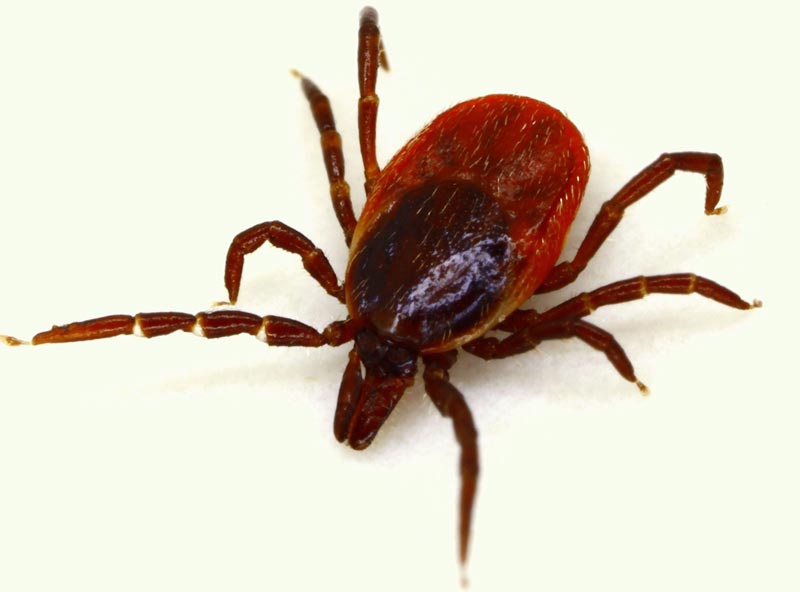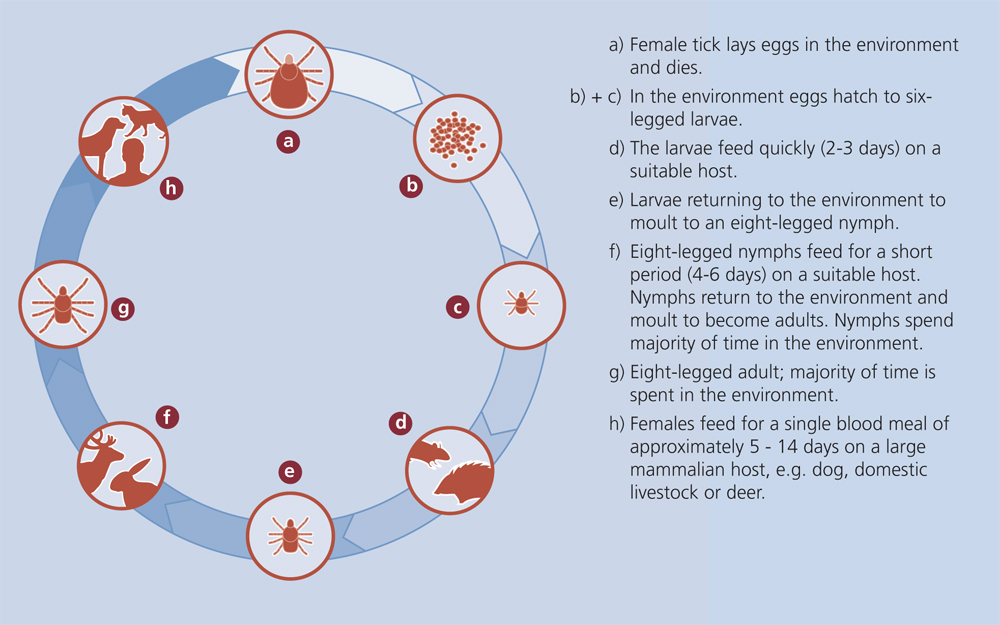tick life cycle uk
In three-host species all three stages target different hosts. Once laid eggs will take between 36 and 57 days to hatch.

4 The Life Cycle Of Rhipicephalus Appendiculatus Displaying The Download Scientific Diagram
There are four stages to a ticks life-cycle.

. Ixodes ricinus is a three-host tick with larvae nymphs and adults feeding on different hosts. 1 The Egg Stage 1 After the adult female tick has acquired a proper blood meal she mates with the adult male tick leaves the host and searches for a suitable spot to lay her eggs. Once a tick hatches from their egg they enter the second stage of their life.
Tick eggs are the first stage of the life cycle and eggs do not feed on blood to survive. Soft ticks are an exception. Ticks go through four life stages.
A hot room or on a hot windowsill. This means that when an adult female tick lays eggs those eggs can live without a host for weeks until they hatch into larvae. Lets review the life-cycle of a tick.
The ticks will dry out and die within 24 hours. Ticks that dwell in the UK make nests that are slightly bigger than ⅛ inch and have a black-and-red color or they can also be translucent. 68 The brown dog tick is rather similar to the castor bean tick however the males carapace is larger and in a non-blood engorged female you can see a ruffle pattern on the trailing edge of the body.
Ticks are not able to lay eggs directly on a host they must first detach. Ticks can be one two or three-host feeders. March 20 2022 A brown dog tick.
As a host brushes past the vegetation ticks climb on. Basically the tick needs three distinct blood meals for it to complete its development. The life cycle of a tick varies depending on the species and family of tick but it generally progresses from an egg to a larvae then to a nymph.
Now let us look at their life cycle to get a better understanding. At this point larval deer ticks are at risk for contracting. It has recently been found in coastal South-East Essex presumed transported by sheep moved from Wales and would seem to be spreading in the UK and in Europe.
The Brown Dog Tick Rhipicephalus sanguineus has been brought into the UK from Europe on dogs and can survive and reproduce inside a home unlike the native UK ticks. The eggs hatch and six-legged larvae emerge from the eggs. The tick requires a blood meal to evolve into each stage of its life.
The first stage of a ticks life is as an egg. These stages are egg larvae or seed tick nymph and adult. The most interesting life cycle is monitored in bloodsucking species.
The life cycle can take place in 1-2 years with most activity described March to June and August to November. A tick starts life as an egg and because tick mortality is so high the female tick lays as many as 18000 eggs in the ground. In one-host species all stages live and moult on the same host eggs are then laid on the ground.
The life cycle of a deer tick lasts about two years and begins in the early spring when an adult female engorged full with blood lays fertilized eggs. During this development ticks go through four stages of life. This tick is more commonly known as the sheep tick and is the vector for a number of diseases which affect livestock such as louping ill tickborne fever TBF babesiosis.
Egg larva nymph and adult. Generally there are two peaks of tick activity in the spring and in the late summerautumn. Check the whole body.
There are at least twenty species of ticks indigenous to the UK with the most common being Ixodes ricinus. Their life cycle takes several different transitions. The cycle begins with an adult female laying eggs in the shelter of grass from which larvae will hatch when the weather warms in spring.
In the USA the highest risk comes from the Deer tick Ixodes scapularis but this is not known in Europe. Ticks that require this many hosts can take up to 3 years to complete their full life cycle and most will die because they dont find a host for their next feeding. Once a tick egg hatches it has to feed on blood at every stage of its life cycle for the rest of its life in order to survive.
The life-cycle stages of Deer Ticks goes from Egg Larva Nymph Adult and at each stage there are ways to help better protect yourself from tick-borne illnesses. In early spring ticks begin to lay their eggs. In essence each large feed will give them the blood meal necessary for them to grow into the next stage.
It is found on domestic and wild animals cattle sheep dog fox hare hedgehog. From the eggs tiny six-legged larvae hatch and they are very hungry. Ticks are a group of more than 800 parasitic arthropods that are closely related to mitesThey feed on blood from birds reptiles and warm-blooded mammals.
Its last blood meal as an adult is in order to reproduce starting the life cycle again. The majority of hard ticks require three different hosts to complete their development. Most ticks go through four life stages.
It may be helpful to have someone else. Egg six-legged larva eight-legged nymph and adult. Ticks are blood sucking ectoparasites that require a suitable host to complete their lifecycle.
Many ticks go through a three host life cycle meaning that they parasite three different host bodies during their lifetime. After hatching from the eggs ticks must eat blood at. Soft ticks are more common in the Southwest and are typically discovered in the ears of pets where the skin in thinner.
Stephany Seipel Date. Many species of soft tick eat several smaller blood meals and lay eggs several times. In two-host species larvae and nymphs share the same host but the adult stage reproduces on a separate host.
However ticks are also often found on lower lying areas of rougher grazing field boundaries etc. What does a tick nest look like in UK. Often the male dies after mating and the female dies after laying anywhere from 2000 to 18000 eggs.
The larva has only six legs. A reasonable number considering the poor chance of finding hosts. When the blood-filled female tick has let herself fall she can lay eggs a few days later.
Ticks life cycle. Ixodes scapularis the black-legged deer tick which is the primary vector for Lyme disease has a four-stage life cycle and a lifespan of about two years. Ticks are active in the months with temperatures above 7 0 C during daytime.
About 2000 eggs are laid. Larvae and nymphs prefers small to medium-sized animals and adults tend to feed on. It takes 3 to.
When ticks search for a host on which to feed they climb to the tips of vegetation and use special sensory organs on their front legs to detect stimulants such as carbon dioxide changes in light and body heat given off by hosts. Ticks hatch from there eggs in the spring or summer months. The male tick feeds before mating as well but hes often a fraction of the size of the engorged female when mating takes place.
Its important to be familiar with this life cycle to get rid of ticks from your lawn and. The life cycle takes on average three years to complete. Lifecycle of a tick.
The tick egg hatches out into a larva. Life Cycle of Ticks. DO THE TICK CHECK Ticks prefer warm moist dark areas of the body.
Like all arachnids ticks have a clear division into females and males. This is the safest way to handle your outdoor clothing as ticks can survive a full cycle in the washing machine. A female tick will lay anywhere between 4000 and 6500 eggs.
Deer tick eggs hatch into larvae in the late summer months during which time they take one blood meal from a small mammal or bird. After hatching from the eggs ticks must eat blood at every stage to survive. They need the dry to die.
Eggs are laid on the ground.

Trek Tragedy Review On Lyme Disease Rcemlearning
The Life Cycle Of The Tick From Eggs To Ambush American Kennel Club
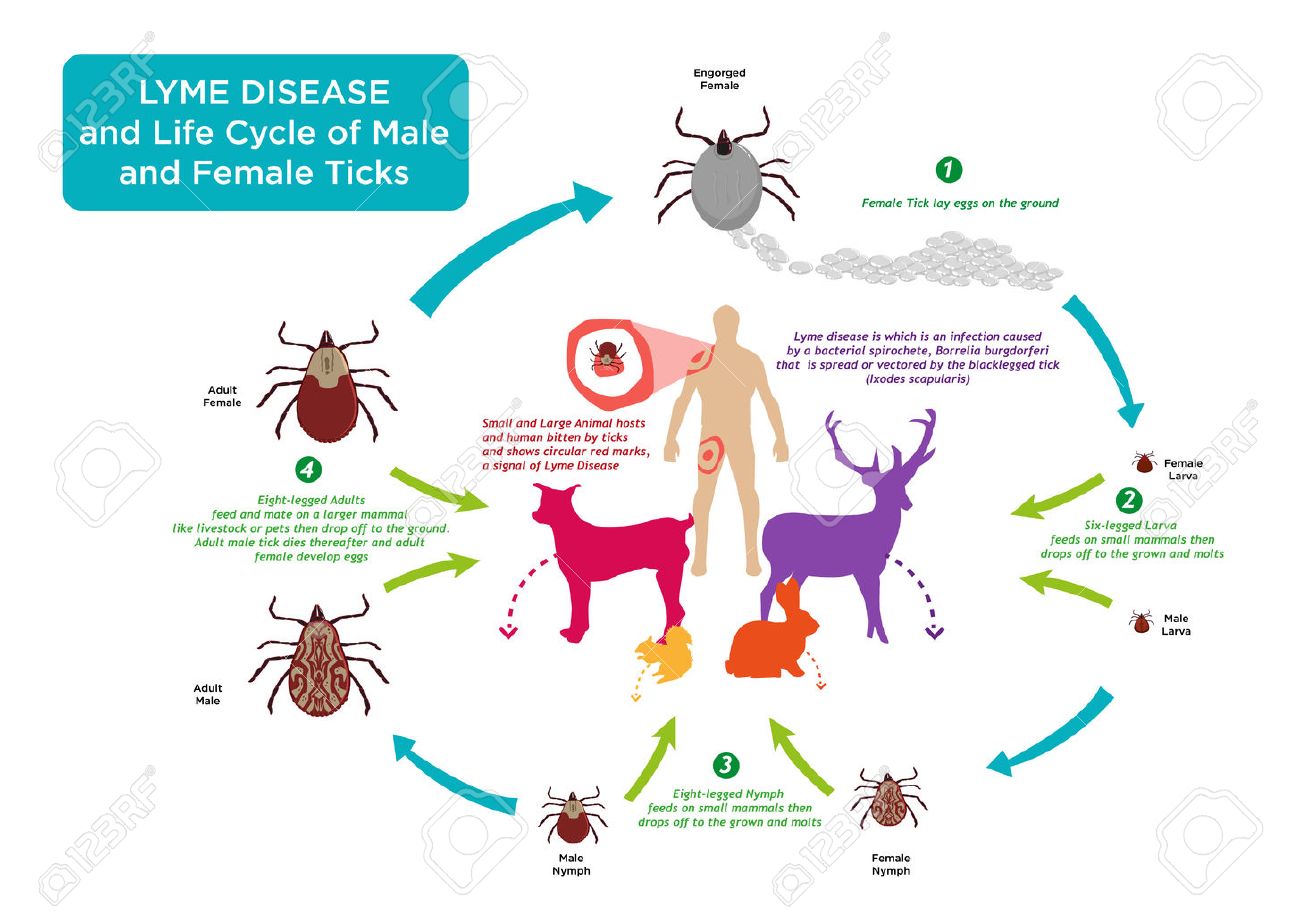
Life Cycle Of Tick Bug With Its Common Hosts And Human With Lyme Disease Which Is
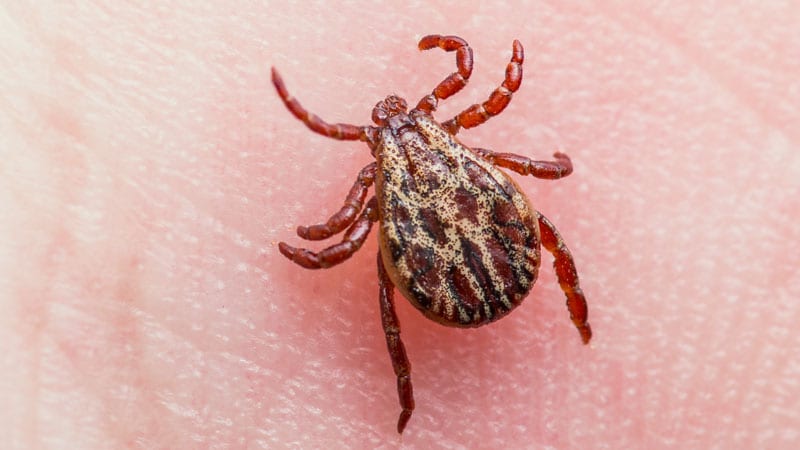
Not Much New In New Clinical Guidelines For Tick Borne Illness

Ticks On Dogs And Cats The Veterinary Nurse

Ixodes Scapularis Tick Life Cycle Diagram Quizlet
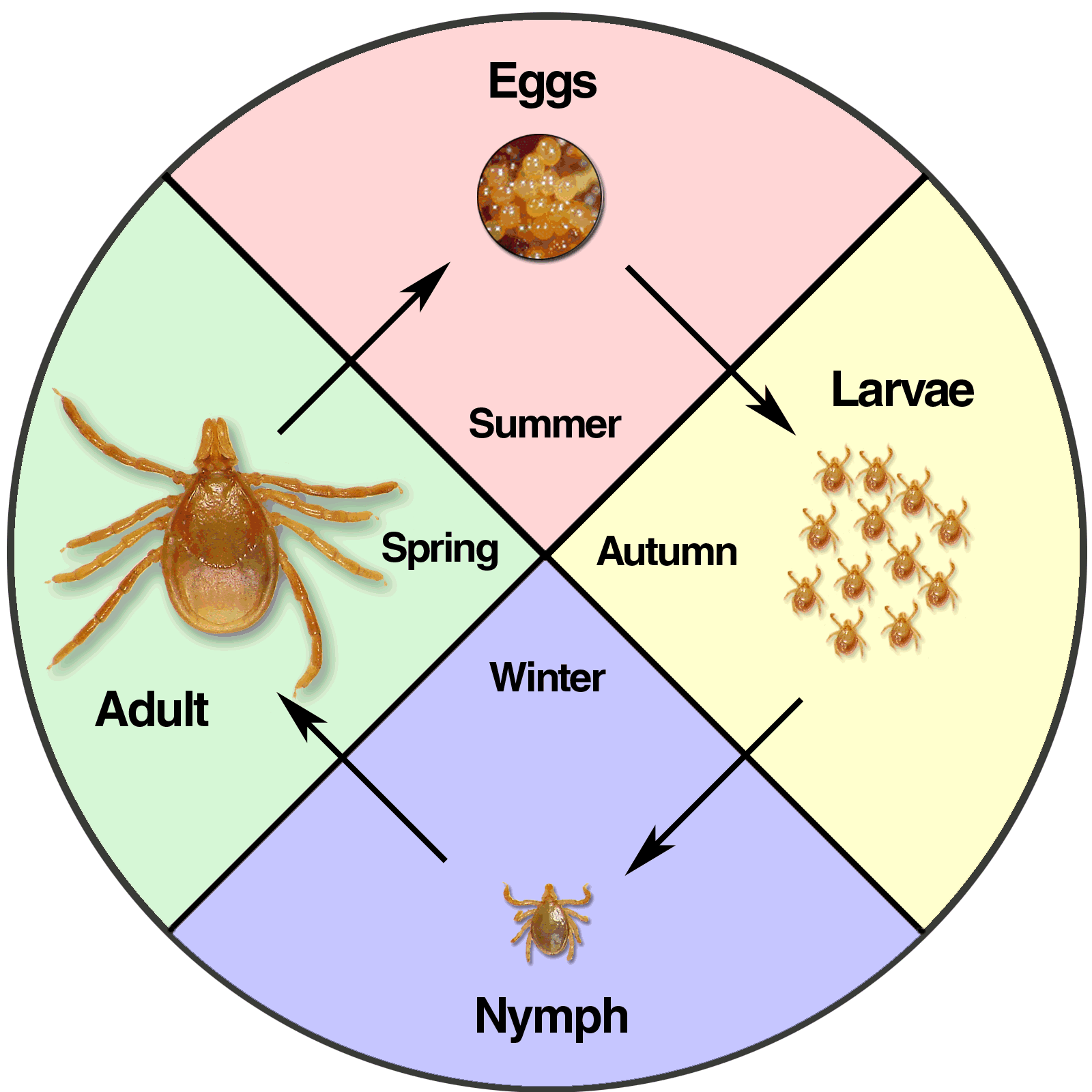
An Overview Of Tick Paralysis Symptoms Treatment And Prevention
Life Cycle Visa Vis Symposiums

Tick Vector An Overview Sciencedirect Topics
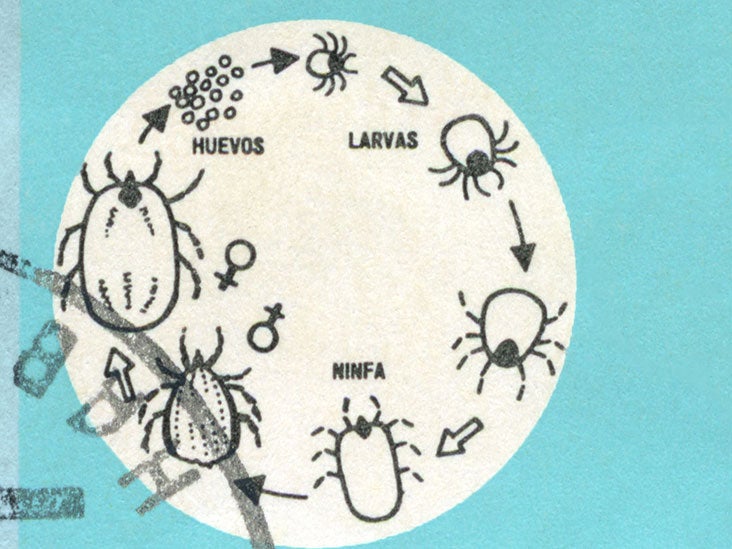
What Are Seed Ticks And Are They Dangerous

Tick Season Is Upon Us Larkmead Veterinary Group
Homepage Bristol University Tick Id

Conceptualizing The Digital Life Cycle
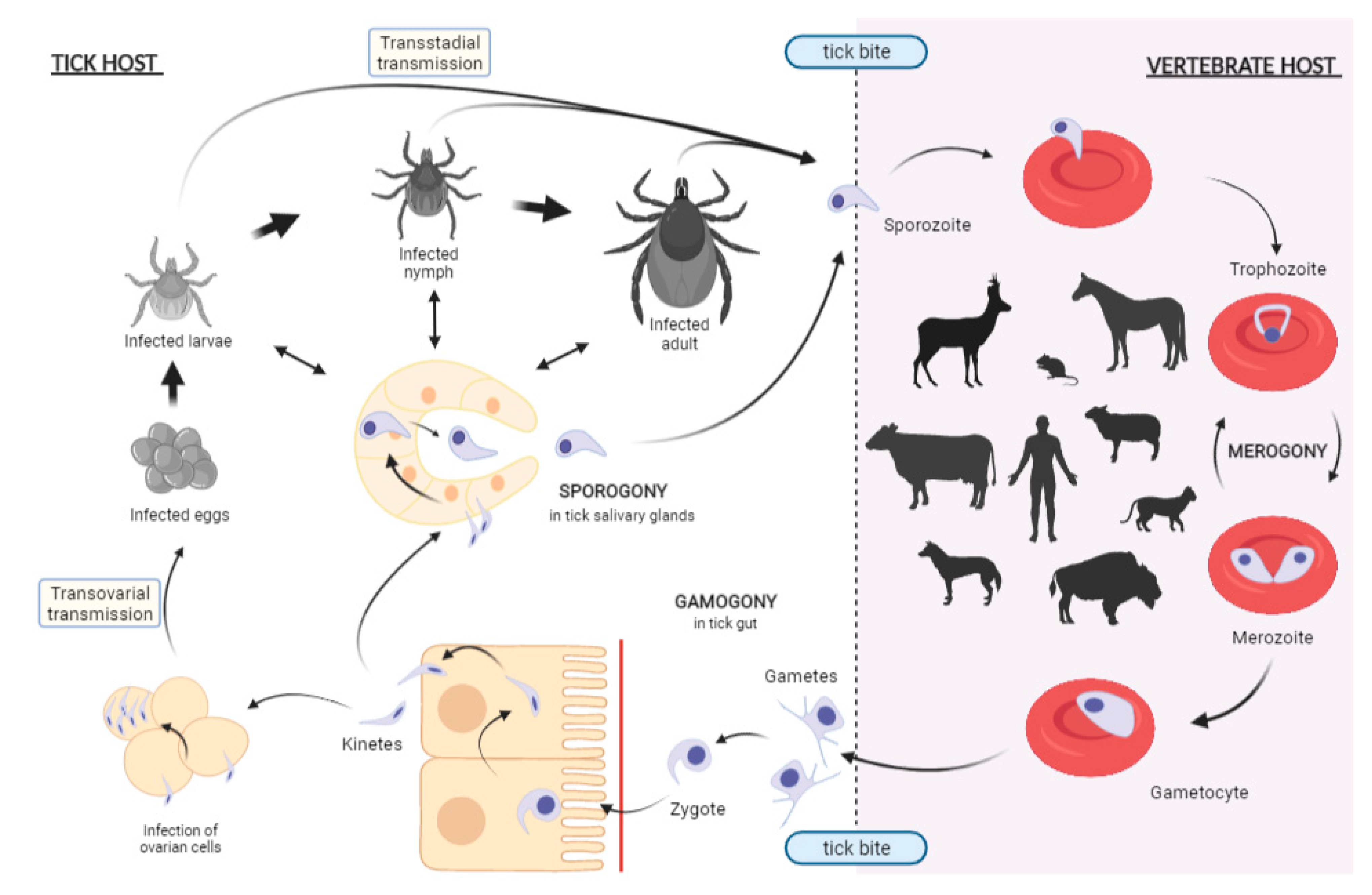
Pathogens Free Full Text Experimental Infection Of Ticks An Essential Tool For The Analysis Of Babesia Species Biology And Transmission Html

Lyme Disease What You Need To Know Cycling Uk
